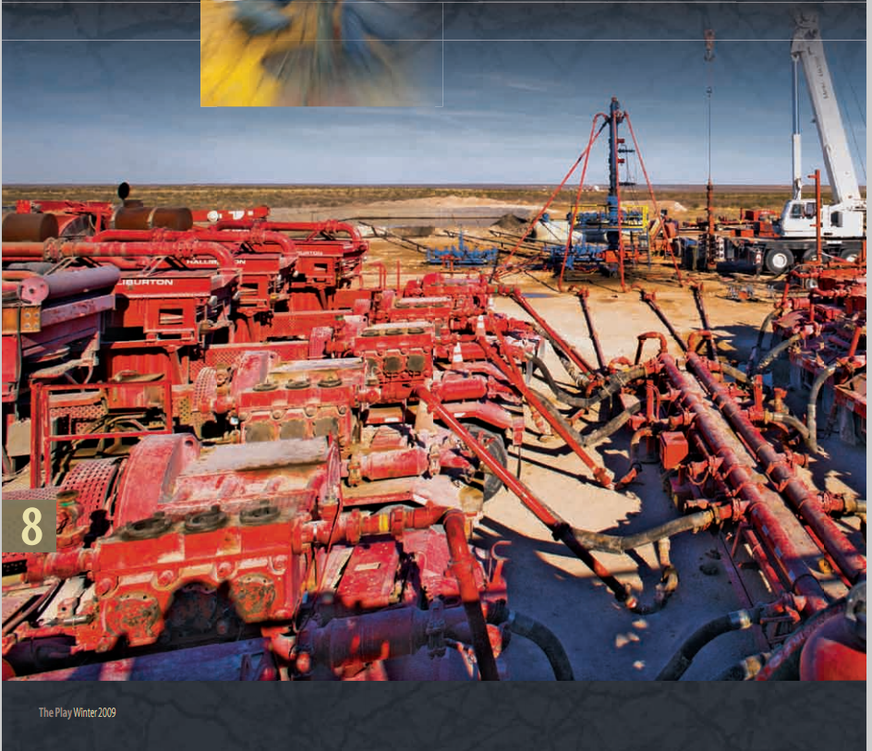Linda - you are correct - Tar sands ARE the focus prior to 'oil shales'.
There is a terminology problem that the media has when it comes to properly describing hydrocarbon resources.
Tar sands are already commercial - in huge quantities in Canada - but, presently, require HUGE amounts of electricity (surplus generation capacity to keep the price low), and of WATER. We also have tar sands in the United States. Many of the tar sands in Canada are shallow enough to be strip mined, and processed in a 'central location'. HOWEVER - there ARE tar sands that are being processed 'in situ' (in place) with newer technology. This is far more expensive, and the 'yields' per cubic yard of resource are dramatically reduced.
OK - so much for TAR SANDS.
Now for OIL SHALES.
Here is where the 'confusion factor' comes in.
OIL SHALES - as already known to the average joe - are properly 'kerogen shales' - and are as prevalent as the TAR SANDS - if not an even greater quantity of hydrocarbons than even the tar sands. Presently - OIL SHALES face huge hurdles in technology, environmental concerns (because of the quantity of earth involved), and REFINING ISSUES. See, what is in these so-called 'oil shales' is NOT really oil - it is immature oil - partially cooked 'hydrocarbons' that have not completed the transition from 'raw organic matter' to 'oil and gas' that time (geologic time), temperature, pressure, and 'interaction with whatever (nobody is entirely positive of the exact process)' - which occurs naturally in the earth.
NOW - what the article you are referencing is talking about is something else entirely different. These are oil accumulations (normal type oil) that occur in extremely impervious but extremely porous SHALES. The same types of accumulations in 'tite formations' have been known about and exploited ever since oil exploration began in the 1800's. You may remember the 'Austin Chalk' play in the 1980's - where oil was extracted from CHALK formations - which have the same problem as SHALES - very high porosity - but the stuff is pretty much 'locked in place' - because there are no permeability paths.
Think of styrofoam, very porous - highly impermeable - verses a sponge - which is BOTH porous AND permeable. Now, the styrofoam could contain a VAST QUANTITY of 'liquid' in it - but it would be almost impossible to get that liquid out. Verses the Sponge - which could also contain 'vast quantities' of liquid - but that liquid would be very easy to 'produce' from the sponge.
The solution that has been used since before the East Texas Oil boom is what is known as 'frac-ing' - or fracturing - the 'impervious' formation (liquid container) - producing numerous cracks through with the contained liquid (or gas) can travel - in this case, travel to the surface where it can be collected.
Nothing new about fracing whatsoever. There are constant improvements to the technology and the machinery used.
Once the 'cracks' are developed (today by using high pressure liquids (water+other junk) rather than the 'nitroglycerin' willy-nilly fracturing of old) - there is a lot of 'design technology' in how to KEEP THOSE CRACKS AS WIDE OPEN AS POSSIBLE. Substances known as 'Proppants' are used to 'prop' the cracks open - and keep those liquid pathways functioning. Common sand to Aluminum Silicates to other 'exotic' materials are used. COST is a main concern there.
You would NOT be impressed if you saw and handled a 'proppant' - it is extremely fine grained - usually much finer grain than your average beach sand - and doesn't really look, feel, smell, or behave any different than most 'powdery substances'. Not quite a 'powder' - but the stuff is fascinating (to me) to study.
Ok - So you ask - Well - If all of this stuff has been around for so long - WHY SUCH A BIG DEAL NOW ?
#1: The price of oil and natural gas is high enough to justify the MUCH higher price of producing from these tite formations (shales and chalks).
#2. DRILLING TECHNOLOGY has made amazingly incredible leaps in capabilities (due to the higher prices justifying more technology development) in the past two decades. It is NOW possible to drill horizontal wells over 2,000 feet long - economically, repeatedly, controllably AND safely.
Many times this horizontal drilling entails going down vertically a thousand feet to 10-15 thousand feet - and then 'turning a corner' with the drilling PIPE - and drilling straight out from there. THINK about that - think about trying to do it in a piece of wood with your normal hand drill and bits - Boggles the mind actually.
WHY IS HORIZONTAL DRILLING IMPORTANT ?
Easy - because GEOLOGIC formations are much more EXTENSIVE horizontally (or close to)/ areally - than they are vertically. The formation may be only 50' in vertical thickness - but may extend for MILES (or tens/hundreds of miles) horizontally.
The MORE 'formation' you expose to the drill pipe - the more 'cracks' you can connect to get the liquid out.
Entiendes ?
So - there ya have it - Monkey502 in Oil and Gas Production.
Oh - the PRESSURES involved ? Five thousand to 18,000+ psi.
The volumes of LIQUID used to make 'cracks' - Up to 2-3 MILLION gallons.
The volumes of PROPPANTS used ? Up to 2-3 MILLION gallons of proppant.
OK - Now - remember all of this is going on in a hole in the ground that can be well over 2-3 miles long - and, many times, is no bigger around than your average coffee cup.
Now - Can we say ..... WOWZERS ?
Amazing stuff, really.

(copied from THIS report ....) http://www.askchesapeake.com/Barnett-Shale/Multimedia/Publications/PLAY_Winter09.pdf

Finally, brethren, whatsoever things are true, whatsoever things are honest, whatsoever things are just, whatsoever things are pure, whatsoever things are lovely, whatsoever things are of good ...
